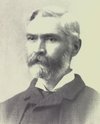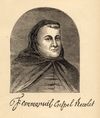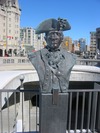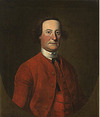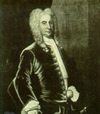Lombard* de Combles. Arriving at Quebec on 18 May 1756 and at Fort Frontenac (Kingston, Ont.) a month later, he drew up plans for improving the latter’s defences and on 8 July reconnoitred
year Dagneau served as an officer and interpreter at Fort Frontenac (Kingston, Ont.), and in 1739 he was in charge of taking presents to Detroit for the Ottawas. Two years later he was promoted first
Hôtel-Dieu in Quebec and superior; b. 27 Jan. 1716 in Montreal (Que.), daughter of Martin Curot, a storekeeper at Fort Frontenac (Kingston, Ont
as chaplain, first at Fort Niagara (near Youngstown, N.Y.) from 27 July 1729 until 1732, then at Fort Frontenac (Kingston, Ont.) until 1735, and finally at Fort Saint-Frédéric (near Crown
Saint-Joseph-de-la-Nouvelle-Beauce (Saint-Joseph, Que.); then from 1753 to 1754 he acted as chaplain at Fort Frontenac (Kingston, Ont.). For some years afterward there is no trace of
with John Bradstreet at the capture of Fort Frontenac (Kingston, Ont.) in 1758. The next year he was second in
abandoned the campaign altogether. He decided that an attack on Fort Frontenac (Kingston, Ont.), which he described as “the Key” to Lake Ontario, must be the first campaign of 1756, and he assigned the task
isolated experience. On 25 June 1752 he was at Fort Frontenac (Kingston, Ont.) to make astronomical observations.
Meanwhile Bonnécamps had become
Niagara (near Youngstown, N.Y.), Frontenac (Kingston, Ont.), and Rouillé (Toronto) that were supposed to be auctioned to the highest bidders at Quebec. He held a 50
Montcalm* at the siege of Fort William Henry (also called Fort George, now Lake George, N.Y.) in August.
The fall of Fort Frontenac (Kingston, Ont.) in
assigning lots, principally to loyalists in the early years. The territory Aitken surveyed began at the western end of what is now Leeds County and included the present Frontenac, Lennox and Addington, and
commandant of the post, a vital link between the Great Lakes and the Mississippi. He served a short term as commandant of Fort Frontenac (Kingston, Ont.) in 1746 and returned to Montreal where he died on 9
, arriving at Quebec 13 May.
In June his battalion was ordered to Fort Frontenac (Kingston, Ont.) for garrison duty and then took part in the capture of
arranged. In an angry letter to Abercromby in June 1758, Vaudreuil recalled Schuyler, who returned in August authorized to negotiate prisoner exchanges. With the fall of Fort Frontenac (Kingston, Ont
the south bank of the St Lawrence, opposite Montreal. Shortly before their arrival, Governor Frontenac
Frontenac [Buade*] sent Deschaillons, then 25 years old, and 15
Mississaugas, to trade with the French and thus dissuade them from taking their furs to the English at Fort Oswego (Chouaguen). Pierre Robinau de Portneuf, who was an ensign at Fort Frontenac (Kingston, Ont.) at
.
Like several seigneurs of the time, François-Antoine Pécaudy de Contrecœur was to have a long military career. He was a member of the expedition which Governor Frontenac
[Rigaud*] sent Péan to command at Fort Frontenac (Kingston, Ont.), where he served until 1725. Two years later he was named commandant of Fort Chambly (south of Montreal) where his father-in-law
Champlain and Lake Ontario. During the winter of 1755–56, Cressé was sent with a work party to Fort Frontenac (Kingston, Ont.) where he began building two ships, a schooner of ten guns (probably the




